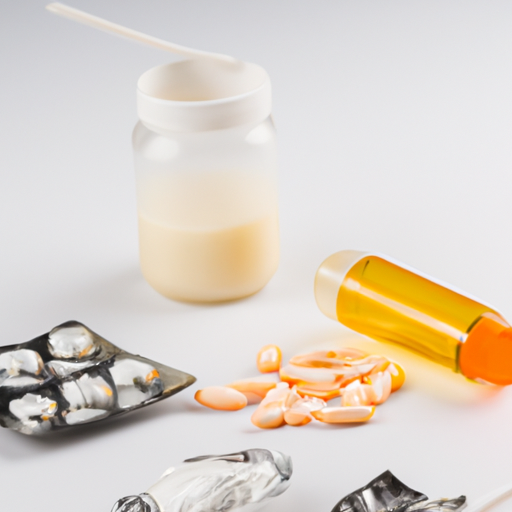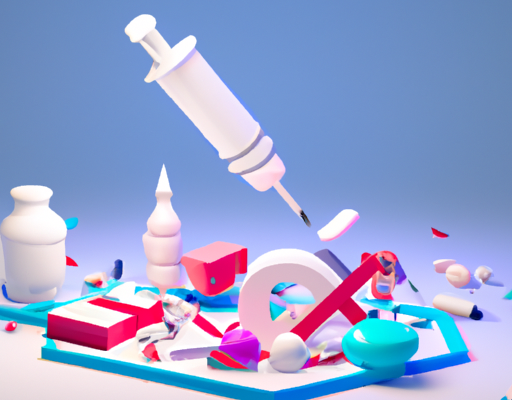What is a pimple?
When it comes to skin health, the word ‘pimple’ often comes to mind. But what are these blemishes really? Pimples are small inflammations on the skin caused by the build-up of bacteria, dead skin, and oil that occur when the pores become blocked. The appearance of pimples ranges from red bumps to whiteheads, and can appear anywhere on the face, back, chest and shoulders. Knowing the location of the pimples can provide insight into their underlying cause, such as hormonal fluctuations or lifestyle habits. As with any skin affliction, seeing a dermatologist is the best way to diagnose pimples and come up with a suitable treatment plan.
Types of pimples
Pimples can be located in different areas of the body and can vary in size, shape, color and texture. While some pimples may not cause any discomfort or pain, others can be quite painful and can even lead to scarring. While it is generally accepted that hormonal changes, diet, skin care and genetics all play a role in the presence of pimples, some believe that the place of the pimples can indicate underlying health issues. For example, pimples on the forehead are said to be related to digestive issues, while pimples on the cheeks mean that you may be consuming too many dairy products. Chin pimples are thought to be related to hormonal changes, while those on the lower jaw represent stress or a lack of sleep. Understanding the health implications behind where your pimples are located can help you take the appropriate steps to treat and prevent them.
Causes of acne
Acne, or pimples, are a common skin condition that affects most people at some stage in their lives. The cause of acne is believed to be due to a combination of hormonal changes, genetics and lifestyle factors. Hormonal changes such as those during puberty or pregnancy can cause an overproduction of oil in the skin, clogging up the pores and leading to acne breakouts. Genetics can also play a role as some people are just more prone to getting acne than others. Finally, lifestyle factors such as stress, a poor diet and inadequate skin care can trigger breakouts. By understanding the causes of acne, you can work to reduce or prevent breakouts by making lifestyle and skincare changes to improve your skin health.
Location of pimples and what it means
The location of a pimple can say a lot about your health. For instance, if you are experiencing breakouts on your chin or jawline, it could signify an imbalance in your hormones. This type of breakout is often referred to as hormonal acne because it is due to fluctuations in your hormones. Breakouts on your cheek or forehead can be attributed to lifestyle factors such as poor diet or lack of sleep. If your breakouts appear on your back or chest, it could be a sign of blocked pores or an underlying skin condition, such as eczema. Understanding the location of your breakouts can be essential for addressing the root cause of the problem.
Face
The location of a pimple on your face can tell a story about what’s happening internally. For example, if you have an acne breakout along your jawline or chin, it could be a sign of a hormonal imbalance. Breakouts in this area could be indicative of changing hormone levels due to puberty, pregnancy, menopause, or even stress. If you’re seeing blemishes along your forehead, this could be a sign of not getting enough sleep, poor diet, or excessive sweat production. In either case, it’s important to be aware of what your skin is telling you and to treat it properly with a gentle skincare regimen. Consulting a dermatologist or physician may also be necessary in order to get to the root of the issue.
Neck
The location of acne can tell a lot about what is causing a breakout. When it comes to acne on the neck, it can be a sign of health issues.
Here’s what to look out for if you have acne on your neck:
- Hormone Imbalances: When hormones become unbalanced, it can cause an increase in oil production, leading to neck acne.
- Sleep Habits: Not getting enough sleep or having an interrupted sleep schedule can cause a hormone imbalance, which can lead to neck acne.
- Stress Levels: Stress can also cause a hormone imbalance, leading to neck acne.
- Diet: Certain foods can lead to an increase in oil production and, consequently, neck acne.
It is important to speak with a doctor or dermatologist if you are experiencing neck acne as it may be a sign of an underlying health issue. Treatment depends on the cause, so it is important to get a diagnosis to ensure the best treatment for your individual case.
Chest
Where your pimples occur may provide clues as to what is causing them, and perhaps even what specific health issues you may need to address. Those located on the chest, for example, tend to be either caused by something as simple as keeping clothes on while sweating, or they could indicate something more serious such as a hormonal imbalance. Clogged pores can be aggravated by sweat and oils, forming red bumps that can be uncomfortable and unsightly. Regularly showering and changing clothes after activity can often help to prevent future outbreaks. If, however, you’re prone to chest outbreaks, or the symptoms persist or worsen, it may be worth talking to a doctor about possibilities such as polycystic ovarian syndrome or an adrenal or thyroid disorder.
Back
Having acne on your back can be distressing and embarrassing, but understanding what its location can mean can help you better understand the issue and how it can be treated. Acne on your back can result from a hormone imbalance or an overgrowth of a certain type of bacteria that lives in the skin. In addition, it could be linked to blocked pores due to sweat and tight clothing. Generally speaking, pimples that are on the upper back are caused by clogged pores that can be treated with over-the-counter medication. However, if the acne is accompanied by cysts or nodules, a visit to the dermatologist is likely in order to find a more permanent solution. Additionally, if the pimples are on the lower back, it could be an indication of an underlying disorder like polycystic ovary syndrome or an autoimmune disorder such as Crohn’s disease. In these cases, it is important to seek out a dermatologist for further evaluation and treatment.
Shoulders
Most people think of pimples as just annoying problems, but the location of these bumps can actually tell you a lot about your health. Shoulders can be a common site for developing pimples. In some cases, this can be caused by excessive sweat, leading to clogged pores. However, if you breakout around your shoulder blade, it can be an indicator of kidney problems. In traditional Chinese medicine, shoulder pimples are thought to be related to the health of the kidney. If the shoulder pimples are accompanied by tiredness, frequent urination, or high blood pressure, it may be time to visit your doctor. Pimples anywhere on the body can be a red flag, and with a proactive approach, they can be a sign of something more serious.
Conclusion
In conclusion, pimple location can have significance when it comes to health. While certain spots may indicate certain conditions, it is not always possible to diagnose an underlying health issue from one or two pimples. If your skin eruptions are persistent or severe, it is best to consult with a licensed dermatologist in order to properly assess and address whatever condition may be present. In general, good skin hygiene, a diet rich in nutrients, proper hydration and stress management can help to reduce the frequency and severity of all types of pimples.





No Comments